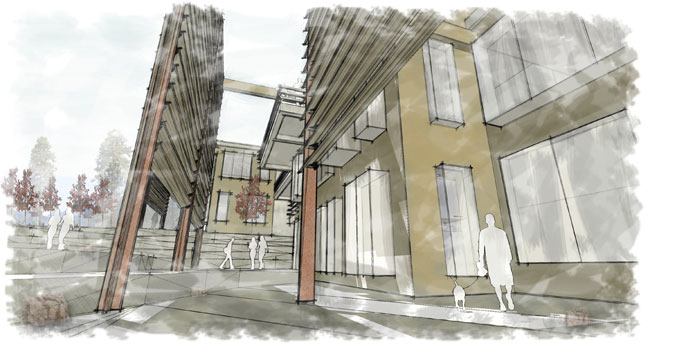






 |
||
External screens (above) are the campus’s most visible architectural motif. The benefit of these screens is to create a comfortable microclimate around the buildings for meaningful social interactions among visitors. These microclimates become gentle transitions between the air-conditioned interiors and sunlit exteriors. The screens’ shading effects allow buildings to have larger windows. Increased views and natural light, as well as control of solar gain can contribute to at least three LEED points. These screens support this design concept’s intent to blend architecture more closely with the landscape—an important connection for children in the Headstart Program. The newly created indoor-outdoor spaces can quiet easily become safe, comfortable, and enjoyable playgrounds for children to play. |
||
 |
||
Screens @ 60° for Sunlight. In Winter, south-facing screens rotate to take advantage of passive solar heating that reduces energy loads for heating the building. Any increased construction costs would pay for themselves with long-term energy savings. |
Screens @ 120° for Views. This standard rotation allows upper floors to view the creek and the rest |
Screen @ 180° for Wind Barrier. In Springtime , screens rotate to block harsh winds to allow visitors to enjoy balconies. The screens may be motor-driven, operated via push-button controls on the balcony, or in adjacent classrooms. |
![]()



